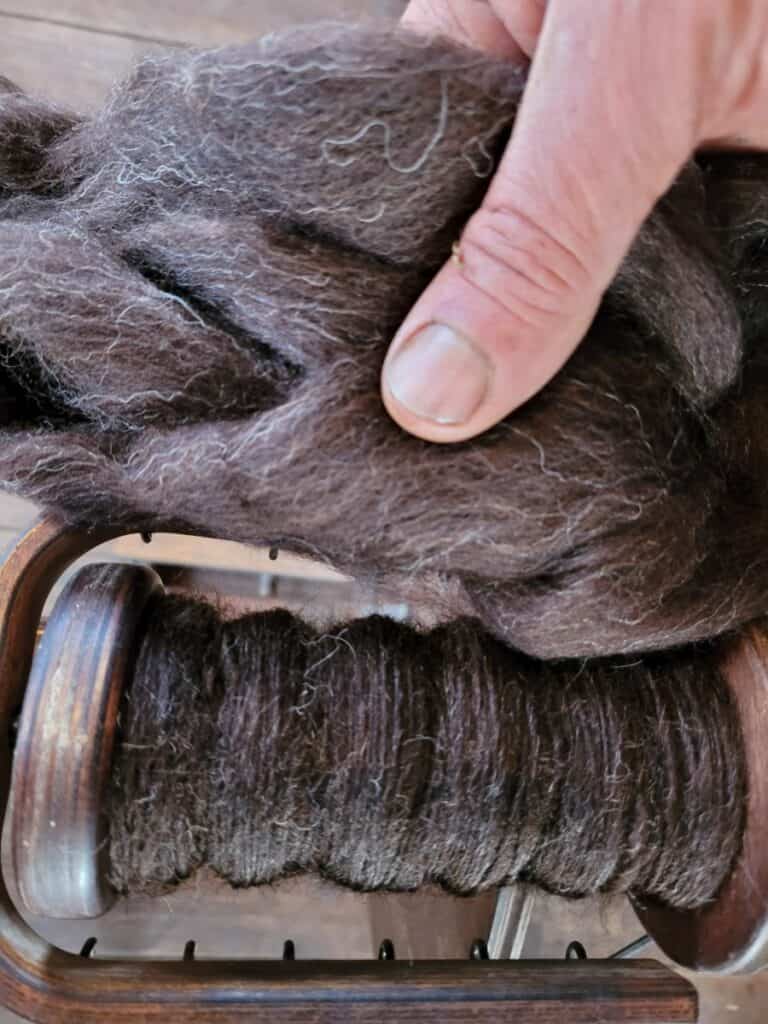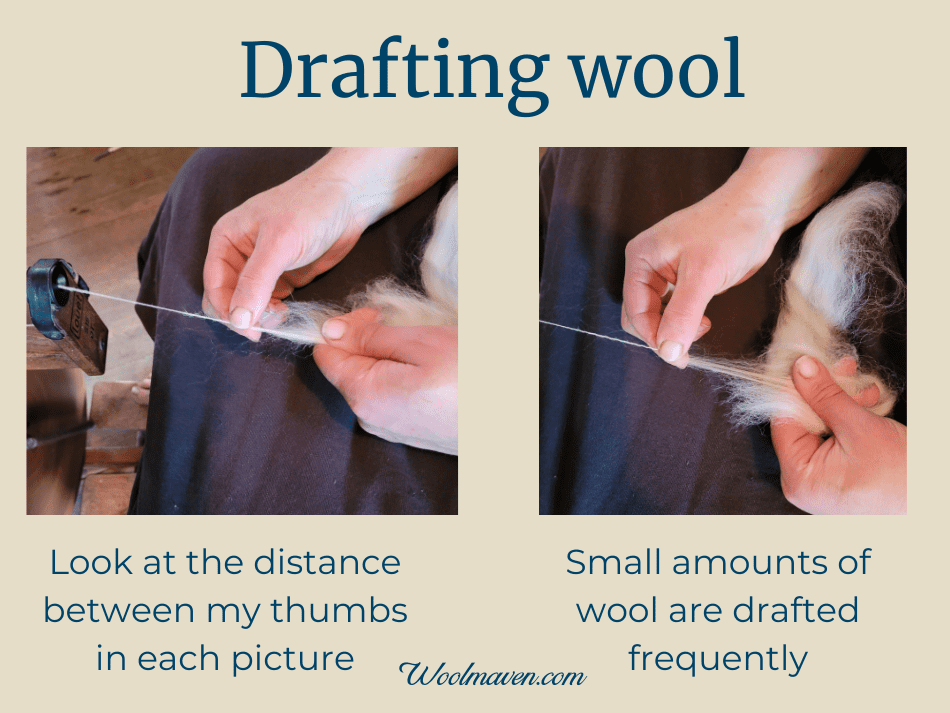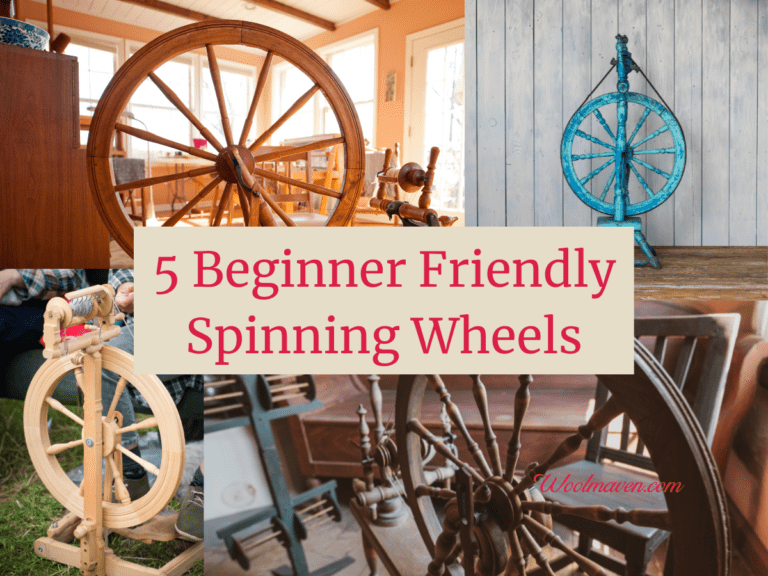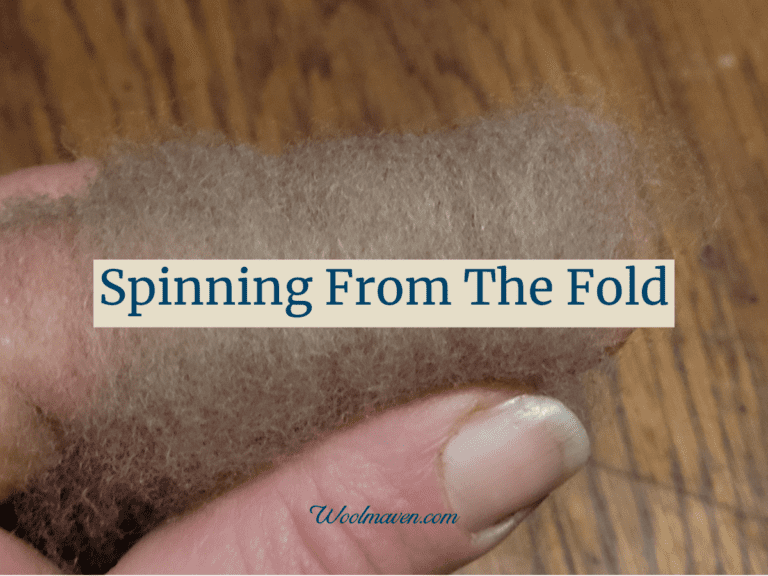Is It Easy To Learn To Spin Wool?
Thinking about learning to handspinning? You can see in your mind all those wonderful yarns, all custom made for you, by you, what could be better!
So, the big question is: what will it take to learn handspinning, it is hard or easy to handspin wool?
Handspinning wool is fairly easy, once you are comfortable with the basic steps. Learning the basic skills will take practice and dedication and is the most frustrating part of handspinning for beginners.
Once you learn the basics of handspinning, learning different spinning styles and working with a variety of fibers will be reasonably easy and, to me, is where all the creativity is!
Looking for a bit more help learning to spin? Take my Beginning Spinner Course at Woolmaven Handspinning!
9 Beginner Friendly Wools To Spin gives you a list of easy to work with breed specific wools that are great to use when you are learning to spin!

Is it easy to learn to spin wool?
It is easy to spin wool, once you know how to put the various actions needed, together, in the right amounts.
All of spinning is simple, it’s the orchestration that is the challenge.
All of the separate parts of spinning are very basic and easy to learn. Putting them together just takes time and repetition.
Let me be straightforward here, it will be frustrating to learn to spin wool, at first. Like anything worth learning or doing, it takes effort.
If you are willing to put in a sustained effort, you will be able to learn to spin.
The most useful advice I can give you here is to allow yourself some grace and when you are frustrated, stop for a bit and come back when your mind is fresh.
This alone will do wonders for you.
Give yourself time to work through leaning to spin. One you “get it”, you’ll find spinning to be relaxing and an enjoyable way to spend your free time.

How long does it take to learn to spin wool?
It will take you a few hours to learn to spin your first yarn and a few weeks to get to spinning comfortably.
To learn to spin what you want every time, almost without thinking, will take considerably longer.
Let me be a bit more specific here regarding yarn and spinning comfortably.
Your first yarn will not look great, at all, it will most likely look pretty wonky, but that’s to be expected.
All you need at first is for the yarn to hold together as yarn, you will refine your spinning and learn more skills from there.
Then it will take dedicated practice to work on spinning the way you want to for the projects you are making the yarn for in the first place.
As to spinning comfortably, what I mean by that is you feel reasonably comfortable working the wheel.
It will take more practice to achieve the results you want, yarn wise.
Roving vs Combed Top gives you the scoop on which fiber preparation is the best for you to use, depending upon what you are trying to make!
Tips to make handspinning easier to learn
There are a few things you can do to make learning to spin easier.
The first thing is to make sure you understand what all of the parts of your wheel are doing and why.
It’s not so important to know the names of the parts as it is to understand what each part does.
This way, when there is a problem, you know where to look for a solution or adjustment.
Secondly, make sure you work on all of the parts of spinning separately before you put them together into the combined activity of handspinning.

Practice drafting out the fiber
What I mean here is that you should practice drafting out your fiber while holding your hands in the position you will use for spinning.
Drafting means pulling the ends of the wool to make the amount of wool that goes into the wheel thinner, which gives you a thinner yarn.
If the yarn is too thick, you are not drafting enough.
Drafting out your fiber before spinning is called predrafting and is a common practice since it will make spinning easier once you start.
Take your time and get the feel of the wool and how much drafting is just right before you try spinning.
If you are wondering if you are drafting out the fiber far enough, give it a few twists and see if it makes a good sized yarn, think of a worsted or sweater weight yarn, as an example to shoot for.
Practice treadling slowly
Also, practice treadling, just treadling.
You want to be able to treadle smoothly and slowly, very slowly at first. I know this sounds a bit odd, but trust me and work on it.
Here are the things you need to work on during treadling practice:
- start and stop multiple times
- treadle at a slow speed
- change the direction of the wheel
You will be spinning clockwise, so send the wheel around to the right as you are practicing.
It won’t take long for you to learn to treadle smoothly and at a slow pace, so be sure to have this worked out before you try to use the wheel to spin.
The easiest parts to learn for spinning wool
The easiest parts of learning to hand spin are all of them, no joke! All of the separate actions that you are doing while spinning are very simple, when done by themselves.
Actually, it’s almost crazy how simple handspinning is, when you really think about all of the separate actions and how it all works.
Things get tricky when you start putting those separate actions together!
The hardest part to learn for spinning wool
The hardest part to learn when you are a beginner to handspinning is figuring out how to do two or three things at once.
Handspinning is a dance of simple things, in the right amount, at the right time.
Woolmaven Handspinning is a beginner level spinning course, that will take you from total beginner to confident spinner. Join now!
Think about when you learned a new skill and you were terrible at first, it could be anything, but we’ll use learning to drive a car.
I can remember being unbelievably frustrated because it looked so effortless when other folks zipped around, but I was nervous about going over 35 mph and hated it when I passed by oncoming traffic.
And I don’t even want to remember parking, let alone parallel parking! Yet, now you and I both drive around with ease, simply due to practice and getting used to it.
It will be the same for handspinning, you just need to keep going and work on one thing at a time then start putting them together.
Tension is tricky
For me, the hardest part to figure out while spinning is the tension. Every wheel has tension done a little differently, mine is a strap with an adjustable screw.
This was the hardest thing for me to figure out when I was first starting, mainly because I could have everything else working reasonably well, but still have the tension wrong and be frustrated.
The second specific thing for me was overspinning.
I think it was really because I was working with a shorter stapled wool, mostly Dorset, so I was overcompensating for the times when I didn’t have enough twist and the yarn zipped through my fingers.
Now that I think about it, I was not drafting well either! But, all of this gets sorted out as you learn!
I can remember first starting to get spinning figured out and being proud of the yarn I made, but now it makes me laugh! It’s all part of learning and step by step improvements.
The Woolery’s article How To Get Started With Spinning gives beginner recommendations on fiber and equipment and has quite a few video tutorials.







